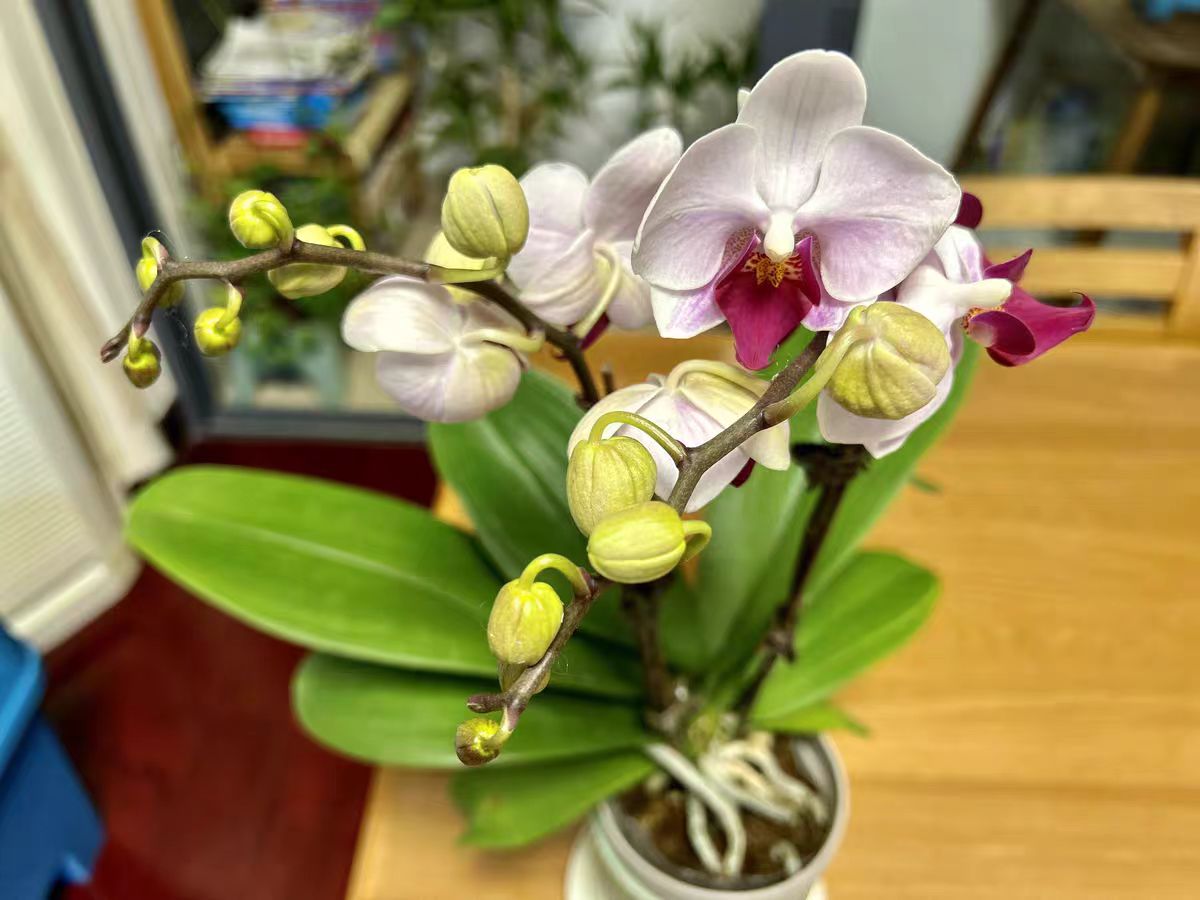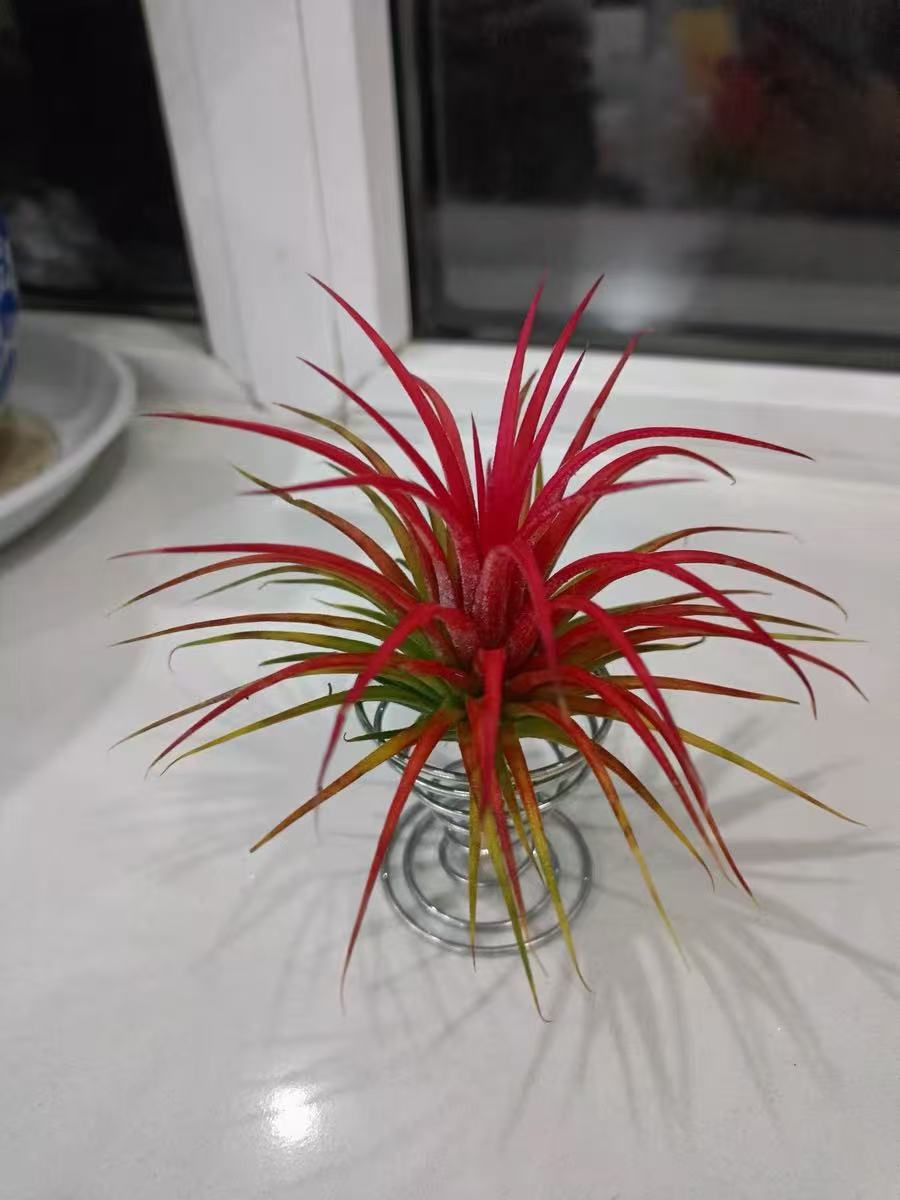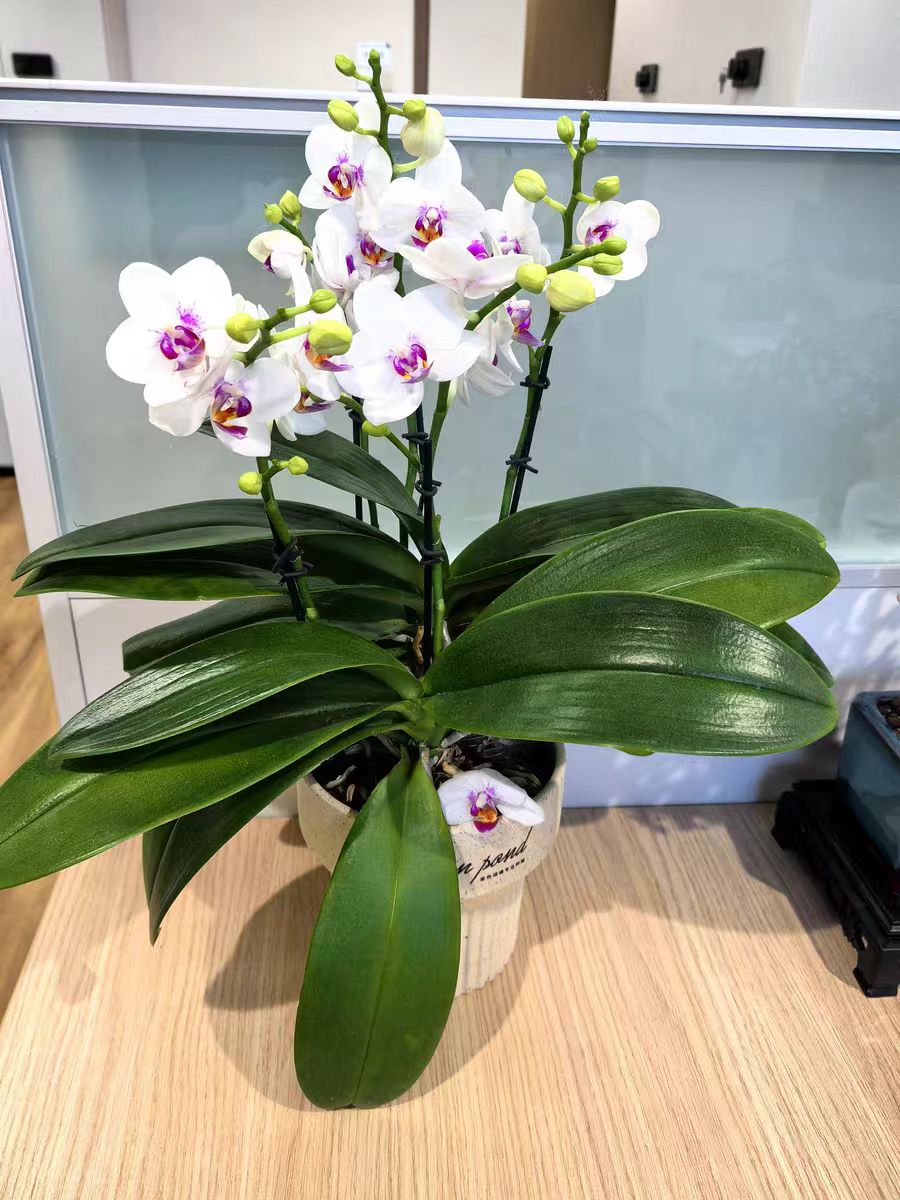Phalaenopsis orchids are a popular choice for indoor ornamental flowers. However, many orchid enthusiasts find that their carefully nurtured Phalaenopsis orchids become thin and weak. This not only affects their appearance but also may lead to difficulty in blooming or even withering. To save a thin and weak Phalaenopsis orchid, it is necessary to first identify the cause of the problem. The following possible reasons are worth exploring.
Insufficient Nutrient Supply: Phalaenopsis orchids require a balanced supply of nutrients to grow. If they lack nutrients, they can easily become thin and weak. On the one hand, improper use of the growing medium can affect nutrient absorption. The roots of Phalaenopsis orchids are aerial roots that prefer a loose and well - ventilated growing environment. If a compact and poorly - ventilated medium such as ordinary garden soil is used for a long time, it will hinder root respiration and prevent the roots from absorbing nutrients from the medium normally. On the other hand, unscientific fertilization is also an important factor. Lack of fertilization for a long time will lead to a deficiency of basic elements such as nitrogen, phosphorus, and potassium in the plant, which will inevitably affect its growth. Over - application of a single fertilizer, such as only applying nitrogen fertilizer, will cause the plant to grow spindly, with thin stems, soft leaves, and reduced resistance. In addition, Phalaenopsis orchids also have a need for trace elements. Lack of elements such as iron and magnesium can cause problems such as yellowing of leaves and slow growth, making the plant even thinner and weaker.
Improper Water Management: Water is crucial for the growth of Phalaenopsis orchids. Both over - watering and under - watering can have adverse effects. When watering is excessive, the growing medium remains wet for a long time, and the aerial roots will rot due to lack of oxygen. Once the roots are damaged, their function of absorbing water and nutrients will be weakened, and the plant will not be able to obtain sufficient "energy" supply, gradually becoming thin and weak. On the contrary, when watering is insufficient, the growing medium is too dry, and the Phalaenopsis orchid cannot obtain enough water to maintain its normal physiological activities. In order to reduce water evaporation, the growth rate of the plant slows down, and the leaves also become shriveled and dull, presenting an overall thin and withered state. Moreover, the timing and temperature of watering also matter. Watering at noon when the temperature is high can damage the roots due to the thermal shock; if the water temperature is too low, it will also affect the roots' absorption of water and nutrients.
Inappropriate Lighting Conditions: Phalaenopsis orchids have specific lighting requirements. Both too strong and too weak light are not conducive to their healthy growth. When the light is too strong, the leaves are prone to sunburn, photosynthesis is inhibited, and the plant cannot accumulate enough organic matter, so its growth is hindered, and it becomes thin and short. When the light is insufficient, the Phalaenopsis orchid cannot carry out photosynthesis fully, and the synthesized nutrients are limited, resulting in a long and thin stem, thin and pale leaves, and overall poor growth. The lighting requirements of Phalaenopsis orchids also vary in different seasons and growth stages. If the lighting is not adjusted according to the actual situation, the plant is likely to become thin and weak.
Poor Temperature Environment: Phalaenopsis orchids are native to tropical and subtropical regions. They like warmth and are sensitive to temperature. When the temperature is too high, the plant's respiration is enhanced, consuming a large amount of nutrients, and the water evaporation is fast. If water and nutrients are not replenished in a timely manner, it will lead to poor growth and the plant will become thin and weak. When the temperature is too low, the growth of Phalaenopsis orchids stops, the cell activity is reduced, the root absorption capacity is weakened, and the plant may also suffer from frost damage, affecting its normal growth and making it gradually decline. In addition, too large or too small a temperature difference between day and night will also disrupt the growth rhythm of Phalaenopsis orchids, which is not conducive to their nutrient accumulation and maintaining a good growth state.
Pest and Disease Infestation: Pests and diseases are the enemies of the growth of Phalaenopsis orchids. Once attacked, the plant can easily become thin and weak. Common diseases such as soft rot and root rot will damage the plant's tissues and roots, affecting the transmission of water and nutrients; leaf spot disease will damage the leaves and reduce the photosynthesis efficiency. In terms of pests, spider mites, scale insects, etc. will suck the plant's sap, resulting in yellowing and withering of the leaves. In severe cases, the growth and development of the entire plant will be affected, and a large amount of nutrients will be plundered, making the plant extremely thin and weak. Moreover, pests and diseases spread quickly. If not prevented and controlled in a timely manner, the degree of damage to the plant will be further aggravated.
The thin and weak state of Phalaenopsis orchid plants is often the result of the combined action of multiple factors. In the daily maintenance process, it is necessary to carefully manage various aspects such as nutrition, water, light, temperature, and pest and disease control, accurately identify the reasons for the plant's thinness and weakness, and take corresponding measures to adjust and improve, so as to make the Phalaenopsis orchid regain its vitality.
Why is the Phalaenopsis orchid plant thin and weak?

Share with
Tagged in :



Leave a Reply